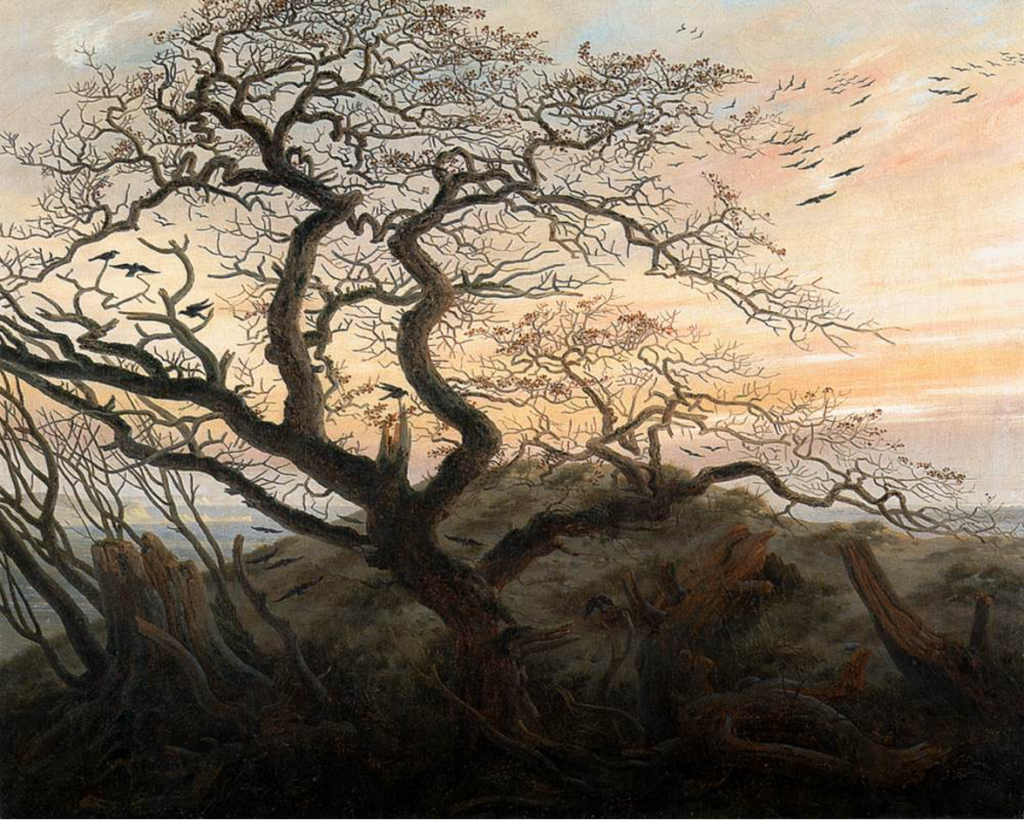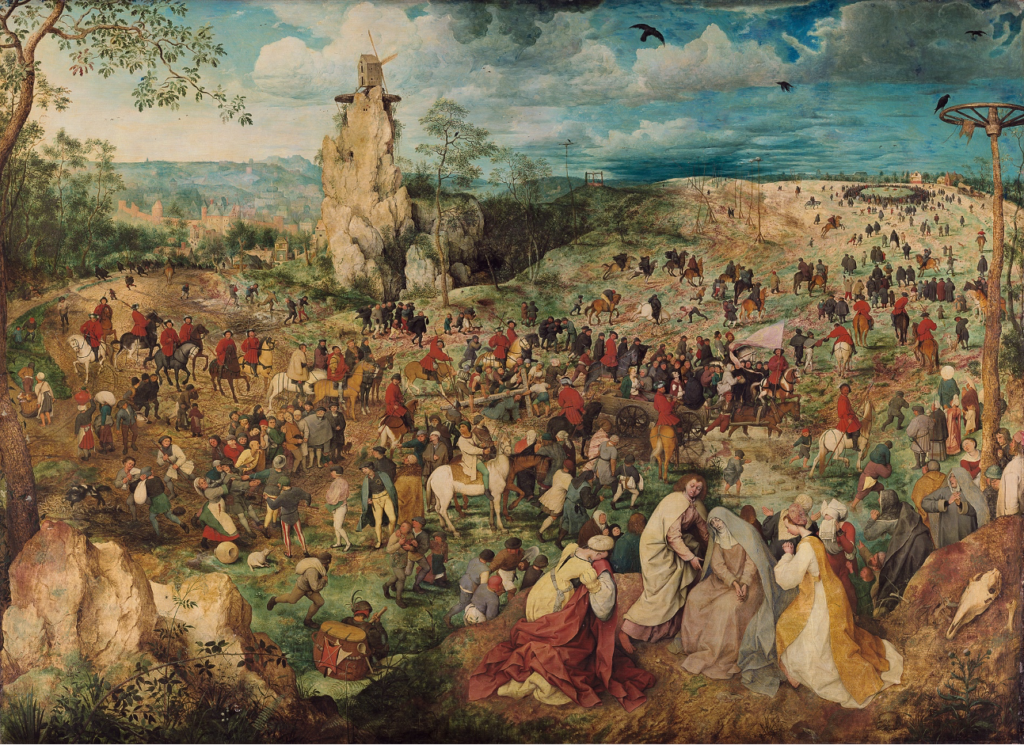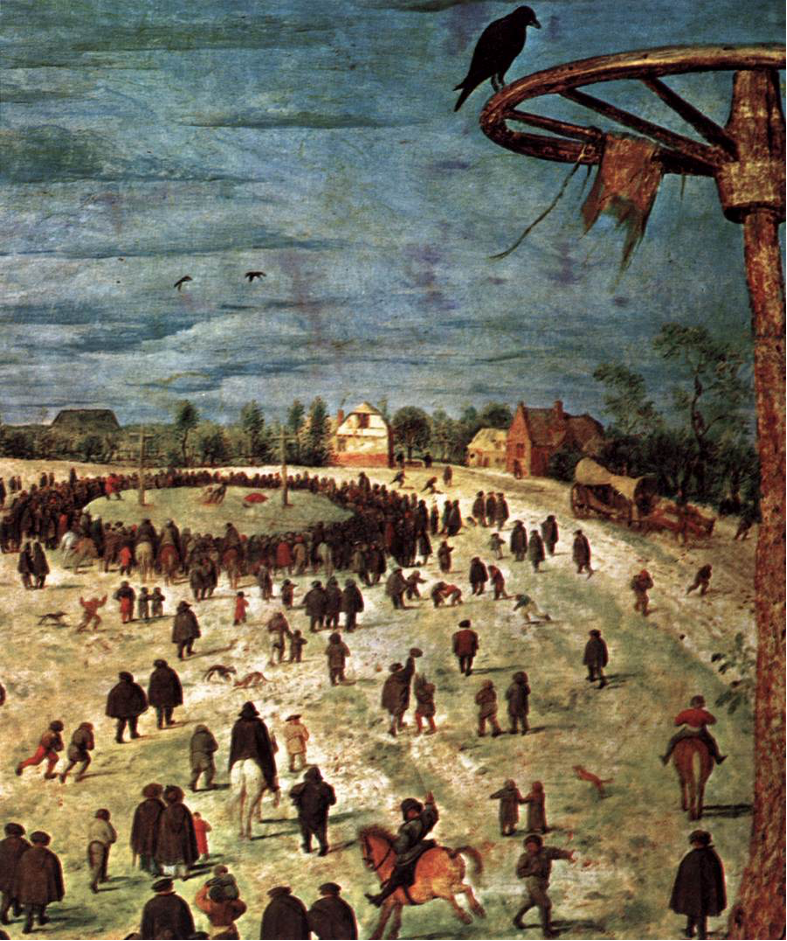The crow
(Poet's title: Die Krähe)
Set by Schubert:
D 911/15
[October 1827]
Part of Winterreise, D 911
Eine Krähe war mit mir
Aus der Stadt gezogen,
Ist bis heute für und für
Um mein Haupt geflogen.
Krähe, wunderliches Tier,
Willst mich nicht verlassen?
Meinst wohl bald als Beute hier
Meinen Leib zu fassen?
Nun es wird nicht weit mehr gehn
An dem Wanderstabe,
Krähe, lass mich endlich sehn
Treue bis zum Grabe.
A crow came with me
When I left the town,
Up until today it has continued to
Fly around my head.
Crow, you strange animal,
Do you not want to leave me?
Are you planning to catch some prey here soon
By taking hold of my body?
Now, there is not much further to go
With this walking staff.
Crow, let me finally see
Faithfulness as far as the grave!
All translations into English that appear on this website, unless otherwise stated, are by Malcolm Wren. You are free to use them on condition that you acknowledge Malcolm Wren as the translator and schubertsong.uk as the source. Unless otherwise stated, the comments and essays that appear after the texts and translations are by Malcolm Wren and are © Copyright.
☙
Themes and images in this text:
Crows Flying, soaring and gliding Graves and burials Heads Journeys Near and far Walking and wandering Walking sticks (Wanderstab) Winter

Tree of crows, c. 1822 (Louvre Museum)
There is an impressive ambiguity about the presence of this crow. On one level it is an omen of death and has to be seen as hostile. It is only interested in the traveller because he is weak and might soon be carrion. However, since the protagonist is beginning to think of death as a desirable destination, he is inclined to look on the crow’s companionship as a positive feature in an otherwise bleak universe.
A similar ambiguity surrounds the crows in the Grimm brothers’ tale Die Krähen, first published in 1815. When a soldier is unfairly robbed, blinded and tied up to a gallows by two comrades, three crows take care of him and cure him of his blindness. Although at the end of the story the victim is inclined to forgive his assailants the crows disagree. They peck out the eyes of the two criminals so that they too are blinded, before they eventually kill them both and leave their bones at the bottom of the gallows. As in Winterreise, the crows symbolise both death and faithfulness at the same time.
Crows and ravens have long been associated with gallows and gibbets, which is hardly surprising since by definition carrion crows live on decomposing flesh. In Pieter Breughel’s 1564 painting of Christ carrying the cross, Golgotha is portrayed as a Germanic hillside with a number of gallows already set up, and a crow perched on the one in the foreground, waiting for its food. Müller and his original readers could not have failed to associate the ideas of crows and hangings. When our traveller reassures the crow that it is not far now to the grave, he could even be suggesting that he too might end up on the gallows. We do not know enough about this traveller’s back-story to rule out the possibility that he is actually a criminal on the run. Even if we decide that this is unlikely, there is still the chance that this is how, in his paranoia, he sees himself.

The carrying of the cross, 1564 Kunsthistorisches Museum, Vienna

☙
On crows and humans: John Metcalfe, When Crows Attack 2017:https://www.citylab.com/environment/2017/08/when-crows-attack/536409/
☙
Original Spelling Die Krähe Eine Krähe war mit mir Aus der Stadt gezogen, Ist bis heute für und für Um mein Haupt geflogen. Krähe, wunderliches Thier, Willst mich nicht verlassen? Meinst wohl bald als Beute hier Meinen Leib zu fassen? Nun, es wird nicht weit mehr gehn An dem Wanderstabe. Krähe, laß mich endlich sehn Treue bis zum Grabe!
Confirmed by Peter Rastl with Gedichte aus den hinterlassenen Papieren eines reisenden Waldhornisten. Herausgegeben von Wilhelm Müller. Zweites Bändchen. Deßau 1824. Bei Christian Georg Ackermann, page 92; and with Deutsche Blätter für Poesie, Litteratur, Kunst und Theater. Herausgegeben von Karl Schall und Karl von Holtei. Breslau 1823, bei Graß, Barth und Comp. No. XLI. 13. März 1823, page 161.
First published in Deutsche Blätter (see above) as no. 3 of the installment of Die Winterreise. Lieder von Wilhelm Müller.
To see an early edition of the text, go to page 92 Erstes Bild 106 here: https://download.digitale-sammlungen.de/BOOKS/download.pl?id=bsb10115225


